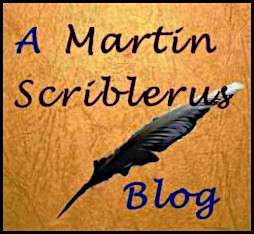According to the radio, the King of England was seventy-five years old today. Once, when he was a young man, he was the focus of the rapt attention of S.pmerset schoolchildren
Our school television could have been a prop from one of those 1960s science fiction series. There was a rectangle of tubular metal which had a wheel at each of its four corners and from each of the four corners there rose four long legs, each a greyish brown colour similar to the base rectangle. The legs disappeared into a box at the top that was the colour of light wood, although whether it was wood, I never discovered; only initiates were allowed to push it from one room to another.
If Dr Who could travel through time in a blue police telephone, what couldn’t he have done with something on wheels? There always seemed a great sense of ceremony in it being moved; perhaps it was unstable and the funereal pace at which it moved reflected a concern for personal safety, perhaps there was concern that any damage would cost a huge amount of money, perhaps it was simply a matter of fear and trepidation at the possible consequences of not doing as one was told.
Once the manoeuvres had been completed with a solemnity that would grace any ceremony, the double doors at the front of the box were opened and the power was turned on.
Our primary school television was black and white, but for a school of forty pupils in the 1960s, it constituted a major item of expenditure. It had come complete with the stilts on wheels that allowed it to be moved backwards and forwards between our two classrooms.
Both BBC and ITV had excellent schools programmes for television; one of them had a clock that counted down the minute before the programme started. Except for Picture Box, I don’t remember the names of the programmes. There was no question of watching anything else on the television, for the simple fact that there was nothing else to watch. As soon as the schools transmission was over, the channels reverted to the test card.
However, if there were to be a major event, the BBC would cover it and Miss Rabbage would let us watch. On 1st July 1969, we got off lightly with school work, the television was turned on and we watched the investiture of Charles as Prince of Wales live from Carnarfon Castle. None of us knew what an investiture was, but it was a lot better than arithmetic and Charles Kingsley.
Only in 2006 did I see for the first time see pictures of the investiture in colour. A polychromatic Charles looks much younger than the black and white stilt borne images that I remember.
I wonder if, on his seventy-fifth birthday, he remembered that summer of 1969 and had any idea of who might be watching.


There was a whole mystique associated with those early tellies.
They used valves contains glowing wires, and and shoogling of the telly could cause a valve to come loose.
They used very high voltages. Scary.
Then there were the use of the mysterious horizontal and vertical holds, which only an member of the inner circle would dare touch.
Lastly, there was the ritual of positioning the Airial. Which would take too long to explain in a short comment.
Then Mr Sony came along and decreed “Enough of that nonsence.”
I used to love the old TV sets, particularly the chance of fiddling with a wire coat hanger aerial to get channels on VHF that would be unavailable through our modern digital sets.
We had an early form of cable TV on the estate where I grew up, until kids found out that you could get quite a decent explosion from the junction boxes. A knitting needle bent at right angles, and stuck in the aerial socket of the TV sufficed for many years after.